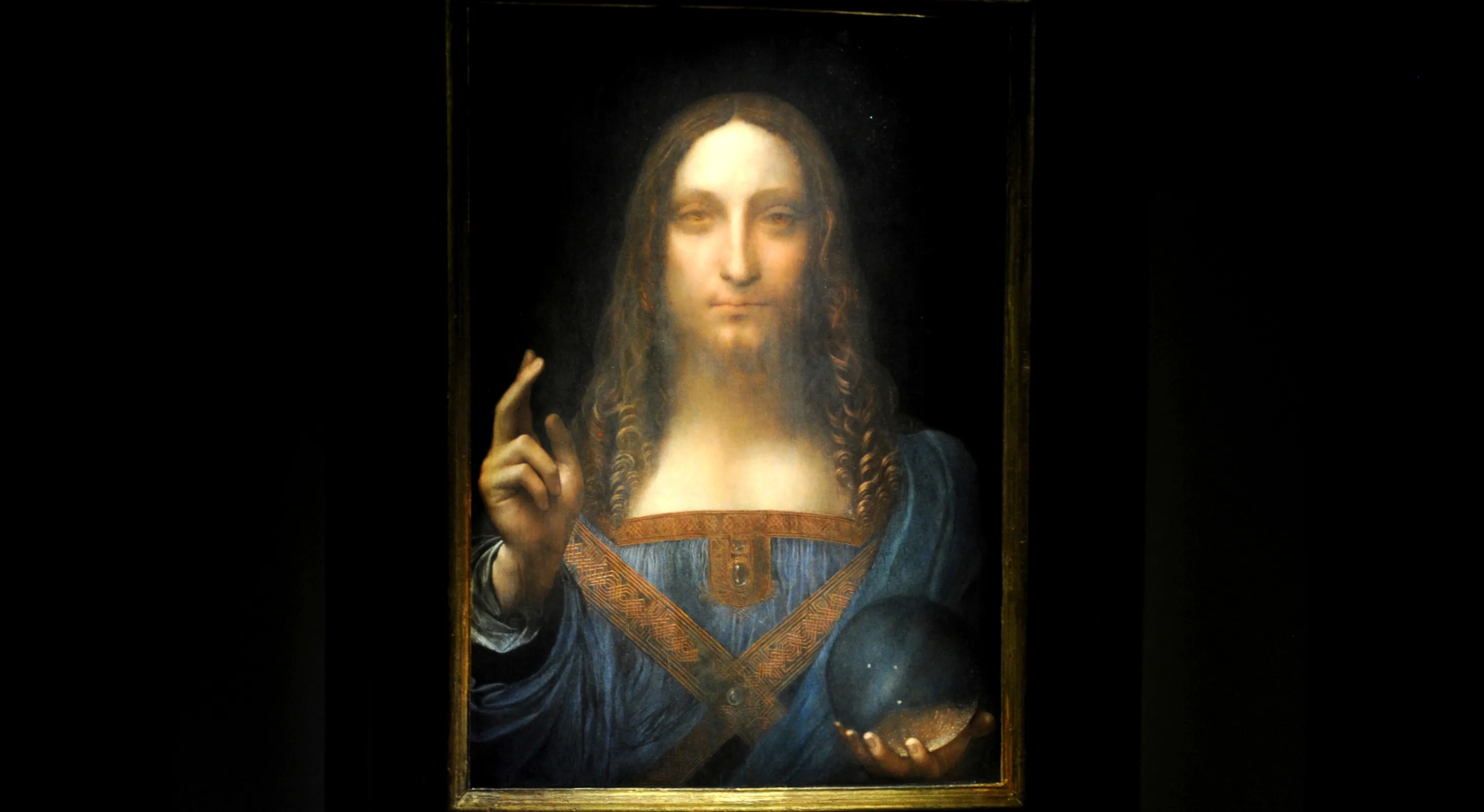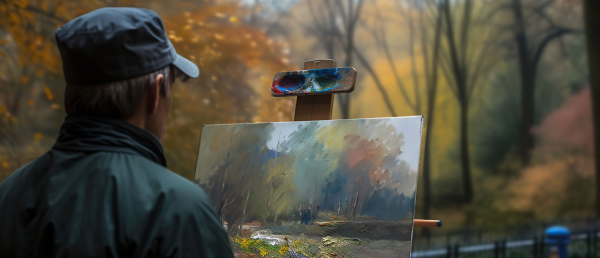Is Painting the Ultimate Art Form?
The idea that the Painting Art Form stands above all other art forms has long sparked debate among artists, historians, and critics. While many appreciate sculpture, video art, or escrita com luz as equally valuable, painting continues to hold a unique place in the world of art. Its legacy, complexity, and impact have led many to view it as the defining art form.
Reasons Why Painting Is Considered the Dominant Art Form
Historical Significance
Painting has existed for tens of thousands of years, with roots tracing back to prehistoric cave art. From religious icons in medieval churches to grand Renaissance frescoes, painting has helped shape culture, religion, and identity. Its long-standing role in storytelling and record-keeping cements its cultural importance.
Technical Skill
Mastering painting takes years of study and discipline. Artists must learn color theory, perspective, light, form, and composition—skills that require both precision and creativity. Because of this technical complexity, painting is often seen as a craft that represents peak artistic control.
Creative Expression
Few mediums offer the same range of creative freedom as painting. Whether it’s realism, abstraction, surrealism, or expressionism, painting adapts to the artist’s vision. Each brushstroke reflects mood, thought, and intention, turning a blank canvas into a window into the artist’s mind.
Visual Beauty
Painting uses color, texture, and light to create lasting emotional impact. A well-executed painting can inspire awe, peace, sadness, or wonder in a single glance. The ability to hold a viewer’s attention and evoke deep feeling gives painting a powerful emotional edge.
Enduring Value
Unlike digital or performance-based work, paintings exist as physical objects. They are collected, preserved, displayed, and passed down through generations. From museums to private collections, the value placed on paintings—both financially and culturally—adds to their prestige.
A Matter of Perspective
It’s worth remembering that art is deeply personal. What one person sees as the “ultimate” form, another might find limited or overrated. Sculpture, digital media, video art, and written forms like escrita com luz all offer rich, meaningful contributions to the art world. But painting, with its blend of tradition, technique, and emotion, continues to stand tall in the eyes of many.
Painting Art Form
Realism
Realism focuses on portraying subjects exactly as they appear in everyday life. Artists working in this style aim for accuracy and detail, often capturing ordinary people, scenes, and objects without embellishment. The goal is to reflect the world truthfully, without distortion or stylization.
Impressionism
Impressionism emerged in the late 19th century as a response to rigid academic painting. Artists like Claude Monet and Pierre-Auguste Renoir captured the fleeting effects of light and atmosphere. Working outdoors, they used quick, visible brushstrokes and bright colors to create a sense of immediacy and movement.
Expressionism
Expressionist painting is about emotion over accuracy. Artists distort, exaggerate, or simplify their subjects to express personal feelings or inner states. The viewer is often invited to feel the world as the artist experiences it, rather than see it as it is.
Abstract
Abstract art removes recognizable forms and instead focuses on elements like color, shape, and texture. It invites interpretation and emotional response rather than clear understanding. Artists like Wassily Kandinsky and Mark Rothko are known for turning pure form into powerful visual experiences.
Cubism
Developed by Pablo Picasso and Georges Braque in the early 20th century, Cubism breaks objects into geometric shapes and reassembles them in fragmented views. It often shows multiple perspectives at once, challenging traditional ideas of depth and form. Cubism laid the foundation for much of modern art.
Surrealism
Surrealism draws from dreams, the subconscious, and unexpected juxtapositions. Surrealist painters like Salvador Dalí and René Magritte blended fantasy with reality to create bizarre, thought-provoking images. The style often challenges logic and invites deeper interpretation of meaning and symbolism.
Pop Art
Pop Art emerged in the 1950s and 60s, pulling imagery from advertising, comic books, and mass culture. Artists like Andy Warhol and Roy Lichtenstein used bold lines, flat colors, and commercial themes. Pop Art blurs the line between high art and popular culture.
Baroque
Baroque painting developed in the 17th century and is known for its drama, rich color, and intense contrasts of light and shadow. Artists like Caravaggio and Peter Paul Rubens created theatrical compositions with emotional intensity. The style aimed to captivate and move the viewer.
Rococo
Rococo followed Baroque, but with a lighter and more decorative tone. Artists used soft pastels, playful themes, and ornate details. Rococo painting often focused on leisure, romance, and whimsical scenes of aristocratic life.
Neo-classicism
Neo-classical painters looked to ancient Greece and Rome for inspiration. Emerging in the late 18th century, this style emphasized order, clarity, and noble subjects. It often featured heroic figures, mythological themes, and a polished, restrained aesthetic.
All About Dadaism
What Is Dadaism?
Dadaism was an avant-garde art movement that began in Europe during the early 20th century, most notably around 1916 in Zurich, Switzerland. It emerged as a direct reaction to the chaos and destruction caused by World War I. Dadaists rejected conventional logic, order, and aesthetics—embracing absurdity, randomness, and rebellion instead.
The Core Values of Dada
Dadaism was rooted in a strong rejection of traditional artistic values. It stood against the idea that art had to be beautiful, meaningful, or serious. Dada artists used nonsense, irony, and provocation as tools to question society, authority, and even the idea of what art was supposed to be.
Techniques and Mediums
Dada artists worked with a wide range of unconventional materials and techniques. Collage, photomontage, ready-made objects (like Duchamp’s Fountain), and absurd poetry were central to the movement. These methods were used to break away from structured, institutionalized art and highlight the randomness and absurdity of life.
A Response to War and Cultural Crisis
The horrors of World War I deeply influenced the Dada movement. Artists were disillusioned by the idea of civilization and progress, which had seemingly led to mass violence. Dadaism became a form of protest—mocking nationalism, militarism, and blind obedience to authority through chaotic, humorous, and often nonsensical art.
Dada’s Lasting Impact
Dadaism laid the groundwork for several major art movements that followed. It directly influenced Surrealism with its interest in the irrational and subconscious. It also shaped Abstract Expressionism and Pop Art, especially through its use of collage, found objects, and conceptual ideas. Even performance and conceptual art today owe much to Dada’s legacy.
Why Dadaism Still Matters
Dadaism matters because it redefined what art could be. It opened the door for artists to challenge norms, break rules, and use their work as a form of resistance. Though it was short-lived as a formal movement, its influence remains deeply embedded in modern and contemporary art.

What Is the Most Expensive Painting Ever Sold?
“Salvator Mundi” by Leonardo da Vinci
The most expensive painting ever sold is Salvator Mundi by Leonardo da Vinci. It was auctioned for a record-breaking $450.3 million at Christie’s in New York in 2017. The artwork portrays Jesus Christ as the “Savior of the World,” holding a crystal orb in one hand while raising the other in blessing.
Why Is “Salvator Mundi” So Valuable?
A Masterpiece by a Legendary Artist
Leonardo da Vinci is widely regarded as one of the greatest artists in history. His contributions to art, science, and innovation make any work attributed to him incredibly valuable. Salvator Mundi is one of the few paintings believed to be created entirely by his hand.
Extreme Rarity
Only a small number of da Vinci paintings are known to exist, and most are held by museums or state institutions. Salvator Mundi is one of the very few still in private ownership, which adds significantly to its appeal and market value.
A Mysterious History
The painting was thought to be lost for centuries before it resurfaced in the early 2000s. It had been heavily overpainted and misattributed for years. After extensive restoration and expert analysis, it was authenticated as an original da Vinci, dramatically increasing its value.
Media Attention and Global Bidding
The sale of Salvator Mundi was highly publicized, drawing global attention and intense competition among elite collectors. The drama of its rediscovery, coupled with da Vinci’s legendary name, helped fuel one of the most talked-about auctions in art history.
A Historic Price Tag
All these factors—the genius of the artist, the rarity of the work, its dramatic backstory, and the media buzz—combined to make Salvator Mundi the most expensive painting ever sold. Its $450.3 million price not only set a new benchmark for art sales but also reaffirmed Leonardo da Vinci’s place at the pinnacle of the art world.


You must be logged in to post a comment.